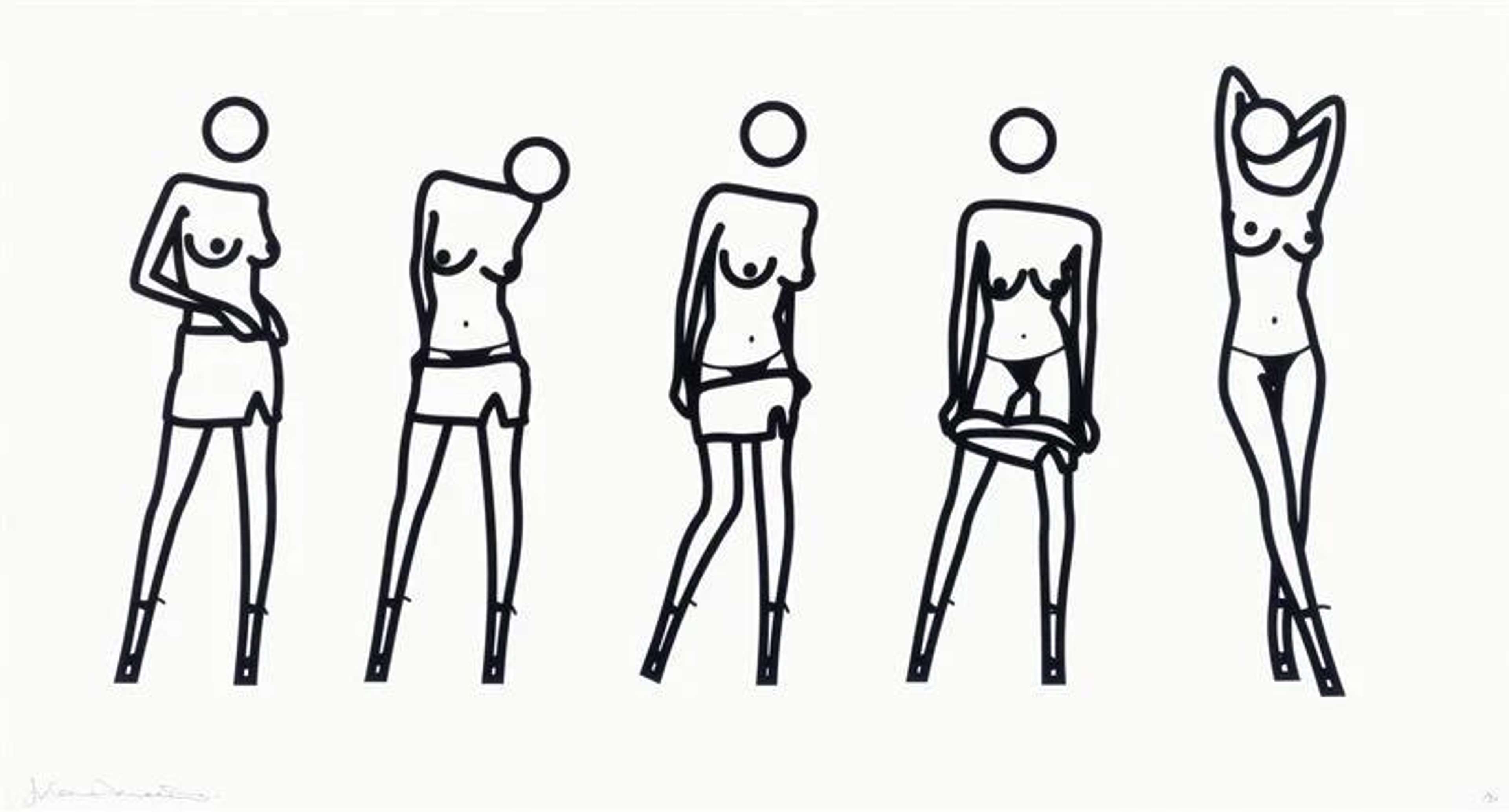Bijou Gets Undressed 7

Bijou Gets Undressed 7
Signed Print
Julian Opie
£7,000-£10,500
$14,000-$21,000 Value Indicator
$13,000-$19,000 Value Indicator
¥70,000-¥100,000 Value Indicator
€8,000-€12,000 Value Indicator
$70,000-$110,000 Value Indicator
¥1,420,000-¥2,130,000 Value Indicator
$9,000-$14,000 Value Indicator
There aren't enough data points on this work for a comprehensive result. Please speak to a specialist by making an enquiry.
38 x 78cm, Edition of 30, Screenprint
Auction Results

Track auction value trend
Meaning & Analysis
Bijou Gets Undressed 7 is a print from Julian Opie’s Bijou Gets Undressedseries from 2004. The print is a sequence of images showing a slim woman wearing no top, showing her bare breasts and taking off a short skirt to reveal her underwear. Bijou’s shoes are invisible, consisting of thin straps around her ankles, alluding to fetishistic ideas surrounding heels being the phallic extension of the legs.
Opie creates a sexually charged image, using the ‘ideal’ woman’s body as we know it from advertising and mass culture and reducing it to a set of signs. Bijou Gets Undressed 7 amalgamates abstraction with realistic moments, showing the figure’s head as a blank circle hovering over her shoulders whilst maintaining sex appeal. By anonymising the woman in the print, aside from providing the viewer with a first name, Opie aims at depicting the stereotypical portrait of a woman.
Bijou Gets Undressed 7 uses choreography, gestures and typical iconography of strip shows and catwalks to produce a predetermined ‘type’ that is instantly recognisable to the viewer. Opie plays into the erotic fantasies of the assumed male spectator through his sign-like visual language to unpack the repeated utilisation of the female body in media and the dominance of the male gaze.